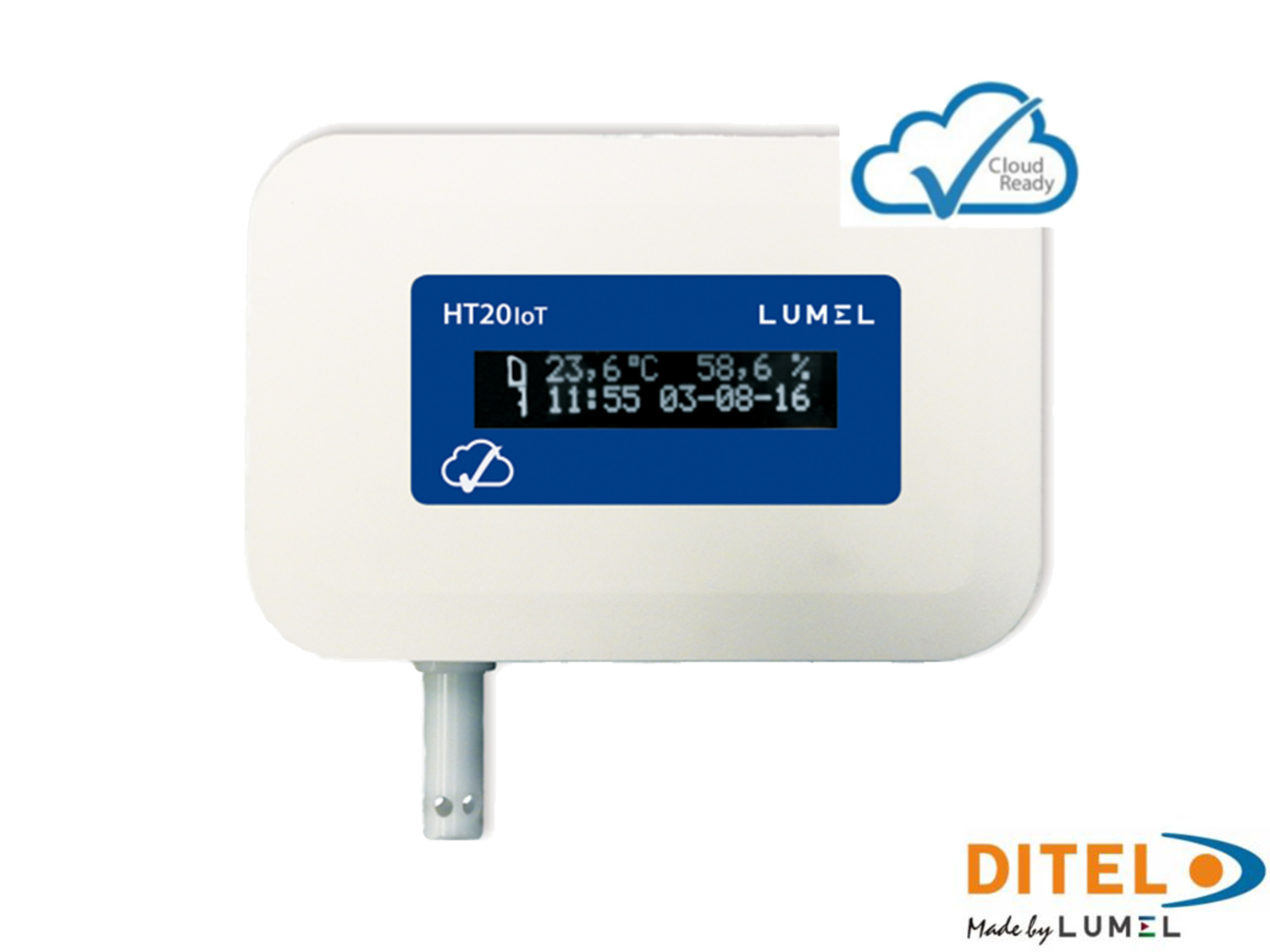HT20IoT monitor has been designed to measure, monitor and record temperature and humidity. It is a perfect solution for any facilities where monitoring and recording such values are very important for the accuracy of the whole process e.g.: in server rooms, drug and food warehouses, laboratories, museums or glasshouses.
The data captured by HT20IoT is stored in the internal memory and then sent digitally to the user (by the Ethernet MQTT).
In case of an emergency situation, the device immediately sends appropriate warnings via emails or via a website.
An additional advantage of HT20IoT is the possibility that it can be powered over the Ethernet. This feature is available in versions that are equipped with the Power over Ethernet system (PoE).
HOW DOES HT20IoT WORK IN CASE THE PRE-SET PARAMETERS ARE EXCEEDED?
The HT20IoT allows up to two defined warnings. Whenever the pre-set parameters are exceeded, the HT20IoT will immediately signal this via:
- emails
- messages on a dedicated website
- special symbols on the display,
- audible alerts
Therefore, every time the HT20IoT is connected to the Internet, you will always have the most up-to-date information on the actual condition of the monitored facility, wherever you are.
ETHERNET INTERFACE AND ITS FUNCTIONALITY
The HT20IoT is equipped with the Ethernet-MQTT interface enabling its connection to the global network.
Thanks to the user-friendly and intuitive www server, you will always have access to the information regarding:
- current measurement values
- device status
The www server call also allow you to:
- configure it
- read the serial number, manufacturing code, software version and bootloader version
The built-in FTP server allows for fast and easy access to archive data files from the level of web browser or from other FTP clients.
The DHCP protocol provides automatic configuration of the monitor in the computer network, whereas the SMTP protocol is responsible for sending the warnings via emails.
The HT20IoT monitor can also work in more extensive systems where the communication protocol Modbus Slave TCP/IP provides a smooth and reliable reading of all current measurement data.
MEASUREMENTS ARCHIVE
Thanks to the dedicated website, you can also check the archive data using a smartphone, tablet or a PC. There is no need to be worried about insufficient memory on the device; the HT20 has an 8GB internal file system memory where the data form the internal memory buffer (4GB) is automatically recorded as files. The memory has a form of a circular buffer and after the storage is full, the oldest files are overwritten. The internal archive can be read, copied and/or deleted.



Reviews
There are no reviews yet.